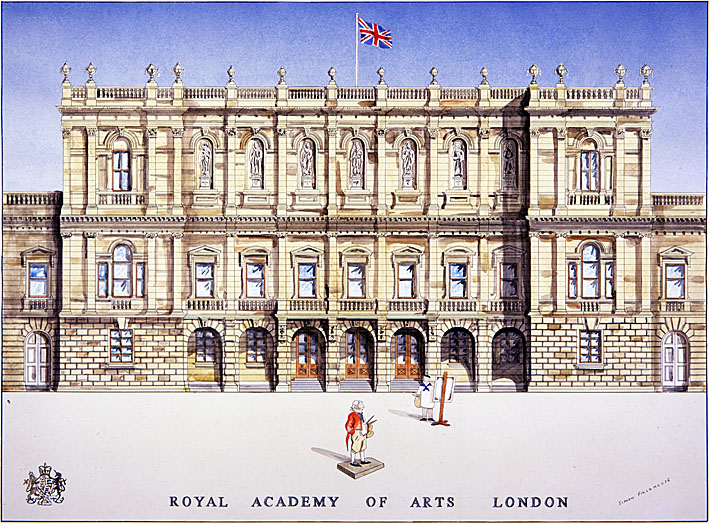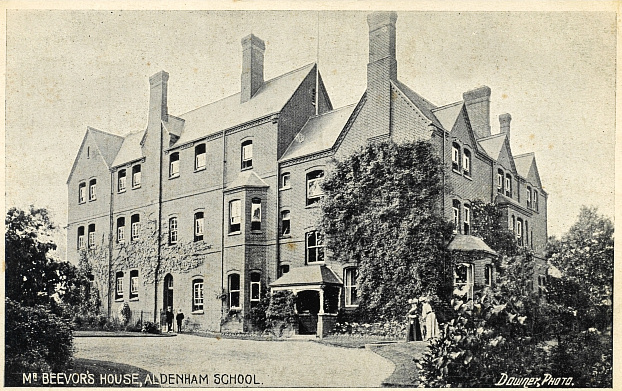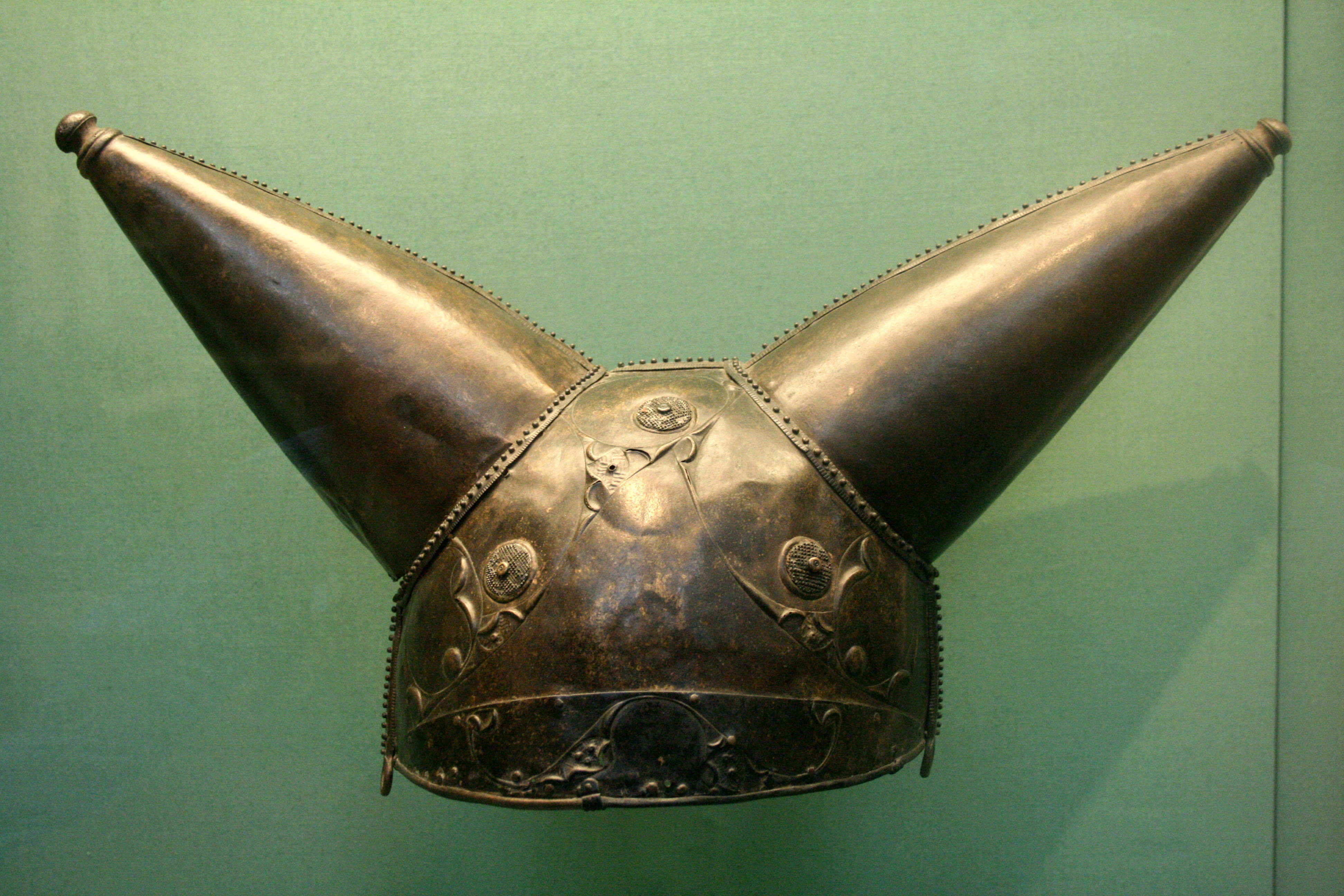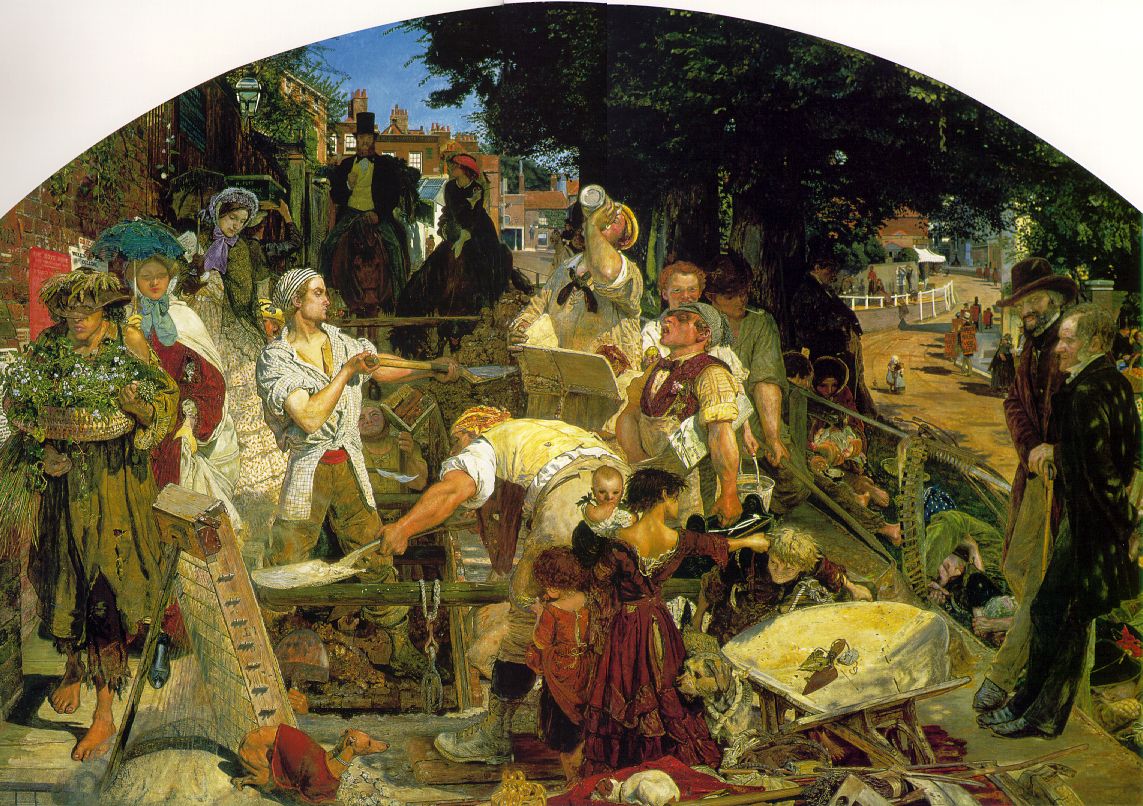|
Alfred Gilbert
Sir Alfred Gilbert (12 August 18544 November 1934) was an English sculpture, sculptor. He was born in London and studied sculpture under Joseph Boehm, Matthew Noble, Édouard Lantéri and Pierre-Jules Cavelier. His first work of importance was ''The Kiss of Victory'', followed by the trilogy of ''Perseus Arming'', ''Icarus'' and ''Comedy and Tragedy''. His most creative years were from the late 1880s to the mid-1890s, when he produced several celebrated works such as a memorial for the Golden Jubilee of Queen Victoria and the Shaftesbury Memorial Fountain, Shaftesbury Memorial Fountain Eros on Piccadilly Circus. As well as sculpture, Gilbert explored other techniques such as goldsmithing and damascening. He painted watercolours and drew book illustrations. He was made a member of the Royal Academy of Arts in 1892, yet his personal life was beginning to unravel as he took on too many commissions and entered into debt, whilst at the same time his wife's mental health deteriorate ... [...More Info...] [...Related Items...] OR: [Wikipedia] [Google] [Baidu] |
Frederick Hollyer
Frederick Hollyer (17 June 1838 – 21 November 1933) was an English photographer and engraving, engraver known for his photographic reproductions of paintings and drawings, particularly those of the Pre-Raphaelite Brotherhood, and for portraits of literary and artistic figures of late Victorian era, Victorian and Edwardian period, Edwardian London.''Concise Grove Dictionary of Art'', "Frederick Hollyer"Obituaries of Fredrick Hollyer, at Luminous-LintWildman, ''Edward Burne-Jones'', p. 197-198 Family Hollyer was the youngest son of Samuel Hollyer (1797–1883), a line engraver, fine art publisher, collector of watercolours, and Deputy Sealer at the Court of Chancery until 1853, when the post was abolished.Biography of Frederick Hollyer at Luminous-Lint His brothers Christopher Charles Hollyer (1836–1874), and Samuel Hollyer Jr. (1826–1919) also worked as engravers.Notes on engraving of the Hollyer Brothers, National Portrait Gallery Frederick Hollyer's first published works ... [...More Info...] [...Related Items...] OR: [Wikipedia] [Google] [Baidu] |
Royal Academy Of Arts
The Royal Academy of Arts (RA) is an art institution based in Burlington House in Piccadilly London, England. Founded in 1768, it has a unique position as an independent, privately funded institution led by eminent artists and architects. Its purpose is to promote the creation, enjoyment and appreciation of the fine arts through exhibitions, education and debate. History The origin of the Royal Academy of Arts lies in an attempt in 1755 by members of the Society for the Encouragement of Arts, Manufactures and Commerce, principally the sculptor Henry Cheere, to found an autonomous academy of arts. Before this, several artists were members of the Society for the Encouragement of Arts, Manufactures and Commerce, including Cheere and William Hogarth, or were involved in small-scale private art academies, such as the St Martin's Lane Academy. Although Cheere's attempt failed, the eventual charter, called an 'Instrument', used to establish the Royal Academy of Arts over a decade ... [...More Info...] [...Related Items...] OR: [Wikipedia] [Google] [Baidu] |
Hertfordshire
Hertfordshire ( or ; often abbreviated Herts) is a ceremonial county in the East of England and one of the home counties. It borders Bedfordshire to the north-west, Cambridgeshire to the north-east, Essex to the east, Greater London to the south and Buckinghamshire to the west. The largest settlement is Watford, and the county town is Hertford. The county has an area of and had a population of 1,198,800 at the 2021 census. After Watford (131,325), the largest settlements are Hemel Hempstead (95,985), Stevenage (94,470) and the city of St Albans (75,540). For local government purposes Hertfordshire is a non-metropolitan county with ten districts beneath Hertfordshire County Council. Elevations are higher in the north and west, reaching more than in the Chilterns near Tring. The county centres on the headwaters and upper valleys of the rivers Lea and the Colne; both flow south and each is accompanied by a canal. Hertfordshire's undeveloped land is mainly agricultural ... [...More Info...] [...Related Items...] OR: [Wikipedia] [Google] [Baidu] |
Aldenham School
Aldenham School is a co-educational private boarding and day school for pupils aged eleven to eighteen, located between Elstree and the village of Aldenham in Hertfordshire, England. There is also a preparatory school for pupils from the ages of five to eleven. It was founded in the late sixteenth century by Richard Platt. History The school was founded in 1597 by Richard Platt, owner of a City of London brewery and Master of the Worshipful Company of Brewers in 1576 and 1581. In 1596, Queen Elizabeth I granted him letters patent to build "the Free Grammar School and Almshouses" at Aldenham; the foundation stone was laid in 1597. Before Platt died in 1600 he obtained an endowment for the School by a covenant between himself and the Brewers' Company. It became a free village grammar school for young boys, also taking in private pupils. In the early 19th century an investigation by the Education Charities Commission of the Poor led to the Tudor Grammar School being demoli ... [...More Info...] [...Related Items...] OR: [Wikipedia] [Google] [Baidu] |
City Of London
The City of London, also known as ''the City'', is a Ceremonial counties of England, ceremonial county and Districts of England, local government district with City status in the United Kingdom, city status in England. It is the Old town, historic centre of London, though it forms only a small part of the larger Greater London metropolis. The City of London had a population of 8,583 at the 2021 United Kingdom census, 2021 census, however over 500,000 people were employed in the area as of 2019. It has an area of , the source of the nickname ''the Square Mile''. The City is a unique local authority area governed by the City of London Corporation, which is led by the Lord Mayor of London, Lord Mayor of the City of London. Together with Canary Wharf and the West End of London, West End, the City of London forms the primary central business district of London, which is one of the leading financial centres of the world. The Bank of England and the London Stock Exchange are both ba ... [...More Info...] [...Related Items...] OR: [Wikipedia] [Google] [Baidu] |
Mercers' School
The Mercers' School was an independent school in the City of London, England, with a history going back at least to 1542, and perhaps much further. It was operated by the Worshipful Company of Mercers and was closed in 1959. History After the dissolution of the Hospital of St Thomas of Acre in 1538, the hospital's land was bought by the Mercers' Company, and the school was founded in 1542 under letters patent of King Henry VIII dated 18 April 1542. It is possible that the new school continued one that had been established in the hospital by an Act of Parliament of 1447, which may have dated back as far as the foundation of the hospital itself in 1190. At different times the school had several different homes in the City of London: Cheapside, Old Jewry, and College Hill ( Dowgate); in 1894 it moved to Barnard's Inn, a site on the south side of Holborn. The school was admitted to the Headmasters' Conference in 1935. It finally closed in 1959. The passageway leading to the Me ... [...More Info...] [...Related Items...] OR: [Wikipedia] [Google] [Baidu] |
Portsmouth
Portsmouth ( ) is a port city status in the United Kingdom, city and unitary authority in Hampshire, England. Most of Portsmouth is located on Portsea Island, off the south coast of England in the Solent, making Portsmouth the only city in England not located primarily on the Great Britain, mainland. The city is located south-east of Southampton, west of Brighton and Hove and south-west of London. With a population last recorded at 208,100, it is the most densely populated city in the United Kingdom. Portsmouth forms part of the South Hampshire urban area with Gosport, Borough of Fareham, Fareham, Borough of Havant, Havant, Borough of Eastleigh, Eastleigh and Southampton. Portsmouth's history can be traced to Roman Britain, Roman times and has been a significant Royal Navy dockyard and base for centuries. Portsmouth was founded by Anglo-Norman merchant Jean de Gisors in the south-west area of Portsea Island, a location now known as Old Portsmouth. Around this time, de Gis ... [...More Info...] [...Related Items...] OR: [Wikipedia] [Google] [Baidu] |
James Mathews Leigh
James Mathews Leigh (1808 – 20 April 1860) was an English art educator, painter, writer, dramatist and critic. He is best known as the founder of a popular private art school in London known as "Leigh's Academy", which eventually became the present day Heatherley School of Fine Art. Life and work Leigh was born in London in 1808, the son of Samuel Leigh,Obituary of J. L. Leigh (The Art Journal, London, 1 July 1860) p200. a well-known bookseller who ran a shop at 18 The Strand, near the Adelphi Theatre London - William Blake was apparently ... [...More Info...] [...Related Items...] OR: [Wikipedia] [Google] [Baidu] |
Edward Hodges Baily
Edward Hodges Baily (10 March 1788 – 22 May 1867; sometimes misspelled Bailey) was a prolific British sculptor responsible for numerous public monuments, portrait busts, statues and exhibition pieces as well as works in silver. He carved friezes for both the Marble Arch and Buckingham Palace in London. His numerous statues of public figures include that of Horatio Nelson on top of Nelson's Column and Charles Grey, 2nd Earl Grey on Grey's Monument in Newcastle upon Tyne. Throughout his career Baily was responsible for creating a number of monuments and memorials for British churches and cathedrals, including several in St Paul's Cathedral. Biography Baily was born on 10 March 1788, at Downend in Gloucestershire, to Martha Hodges (1755–1836) and William Hillier Baily (1763–1834), a woodcutter who specialised in carving ship's figureheads. At the age of fourteen he was placed as an accounts clerk in a mercantile house, where he worked for two years, though he continued to pro ... [...More Info...] [...Related Items...] OR: [Wikipedia] [Google] [Baidu] |
Ford Madox Brown
Ford Madox Brown (16 April 1821 – 6 October 1893) was a British painter of moral and historical subjects, notable for his distinctively graphic and often William Hogarth, Hogarthian version of the Pre-Raphaelite style. Arguably, his most notable painting was ''Work (painting), Work'' (1852–1865). Brown spent the latter years of his life painting the twelve works known as ''The Manchester Murals'', depicting History of Manchester, Mancunian history, for Manchester Town Hall. Early life Brown was the grandson of the medical theorist John Brown (physician, born 1735), John Brown, founder of the Brunonian system of medicine. His great-grandfather was a Scottish labourer. His father Ford Brown served as a purser in the Royal Navy, including a period serving under Sir Isaac Coffin, 1st Baronet, Sir Isaac Coffin and a period on HMS Arethusa (1781), HMS ''Arethusa''. He left the Navy after the end of the Napoleonic Wars. In 1818, Ford Brown married Caroline Madox, of an old ... [...More Info...] [...Related Items...] OR: [Wikipedia] [Google] [Baidu] |
Bronze
Bronze is an alloy consisting primarily of copper, commonly with about 12–12.5% tin and often with the addition of other metals (including aluminium, manganese, nickel, or zinc) and sometimes non-metals (such as phosphorus) or metalloids (such as arsenic or silicon). These additions produce a range of alloys some of which are harder than copper alone or have other useful properties, such as strength, ductility, or machinability. The archaeological period during which bronze was the hardest metal in widespread use is known as the Bronze Age. The beginning of the Bronze Age in western Eurasia is conventionally dated to the mid-4th millennium BCE (~3500 BCE), and to the early 2nd millennium BCE in China; elsewhere it gradually spread across regions. The Bronze Age was followed by the Iron Age, which started about 1300 BCE and reaching most of Eurasia by about 500 BCE, although bronze continued to be much more widely used than it is in modern times. Because historica ... [...More Info...] [...Related Items...] OR: [Wikipedia] [Google] [Baidu] |
Oxford Street
Oxford Street is a major road in the City of Westminster in the West End of London, running between Marble Arch and Tottenham Court Road via Oxford Circus. It marks the notional boundary between the areas of Fitzrovia and Marylebone to the north, with Soho and Mayfair to its immediate south. It is Europe's busiest shopping street, with around 300,000 daily visitors, and had approximately 300 shops. It is designated as part of the A40, a major road between London and Fishguard, though it is not signed as such, and traffic is regularly restricted to buses and taxis. The road was originally part of the Via Trinobantina, a Roman road between Essex and Hampshire via London. It was known as Tyburn Road through the Middle Ages when it was notorious for public hangings of prisoners at Tyburn Gallows. It became known as Oxford Road and then Oxford Street in the 18th century and began to change from residential to commercial and retail use, attracting street traders, conf ... [...More Info...] [...Related Items...] OR: [Wikipedia] [Google] [Baidu] |







